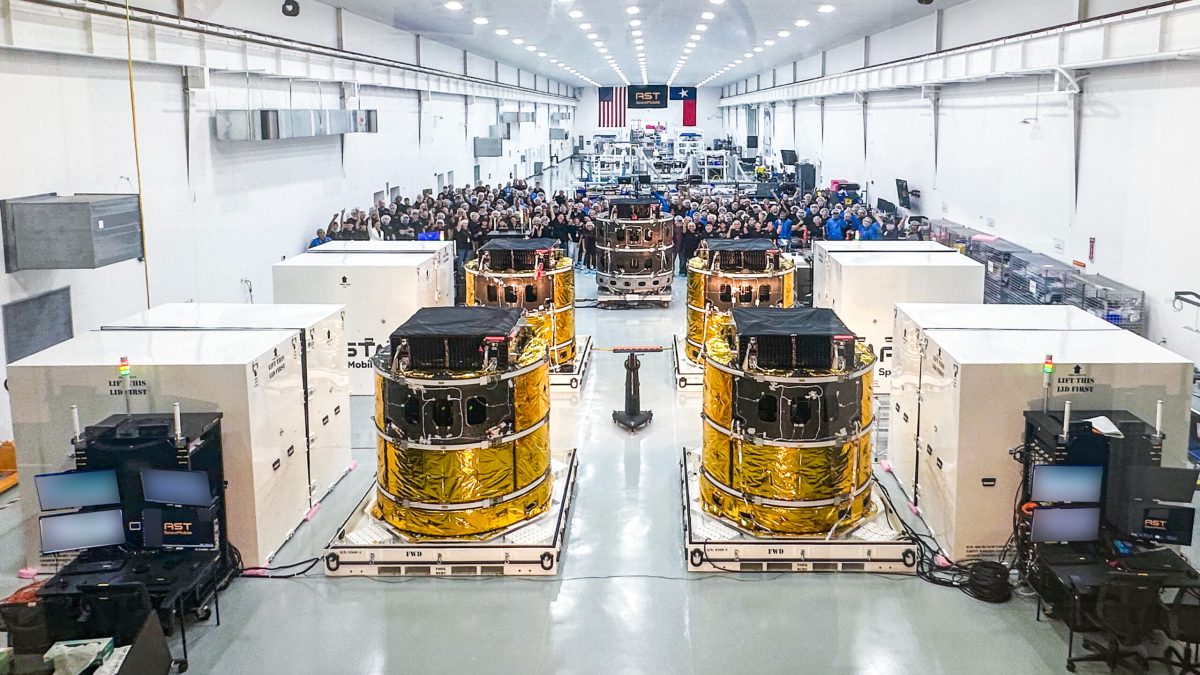TAMPA, Fla. — AST SpaceMobile has received conditional approval to deploy and operate its first five operational direct-to-smartphone satellites slated to launch next month, the Texas-based venture said Aug. 5 as it waits for the nod to test and provide commercial services.
The U.S. Federal Communications Commission’s partial license authorizes the company to use V, S and UHF frequencies in space to support gateway and control operations for the initial BlueBird spacecraft.
The FCC deferred deciding whether to grant AST SpaceMobile permission to use cellular frequencies to test its planned service. The regulator also deferred a decision on the company’s request to deploy and operate an additional 243 satellites.
Like SpaceX, which is undergoing tests after launching more than 100 direct-to-smartphone satellites as part of its sprawling Starlink broadband constellation, AST SpaceMobile also needs FCC approval to connect devices in cellular blackspots across the United States on a commercial basis.
“We conclude that it is in the public interest for AST to begin deploying its satellites with the ultimate goal of testing an [Supplemental Coverage from Space]-capable system, subject to additional approvals,” the FCC wrote.
While “this grant does not authorize any operations or testing for SCS,” the FCC said “we believe that the deployment of five satellites under this limited grant, subject to additional approvals, will enable AST to request authority to further test this still-emerging technology.”
Companies opposed to direct-to-smartphone services warn about light pollution from space and potential interference with terrestrial networks.
AST SpaceMobile plans to use cellular frequencies from AT&T and Verizon, which have also invested in the company, and spacecraft equipped with the largest commercial communications arrays deployed in low Earth orbit (LEO).
Each of the five 1,500-kilogram Block 1 BlueBird satellites is designed to provide 10 times the capacity of BlueWalker-3, a prototype the company also built in-house that has achieved download rates of more than 21 megabits per second in LEO.
Following a series of production delays, AST SpaceMobile recently said the initial satellites are now ready for a launch with SpaceX and have a weeklong window in September for the Falcon 9 mission.
AST SpaceMobile also has a launch window running from December to March for its first Block 2 BlueBird, twice as big as a Block 1 with 10 times the capacity.
The company needs between 45 and 60 BlueBirds for continuous coverage in the United States, supporting text, voice and data services.
SpaceX plans to use cellular frequencies from T-Mobile in the United States and aims to provide initial texting services later this year.
According to AST SpaceMobile, it has agreements with more than 45 mobile network operators in total, representing a combined 2.8 billion existing subscribers.
Among conditions tied to the partial operational license, the FCC said AST SpaceMobile must make efforts to reduce the brightness of its satellites and implement a conjunction assessment and mitigation process “of the same sophistication and risk aversion” as the NASA spacecraft located near the proposed constellation.
